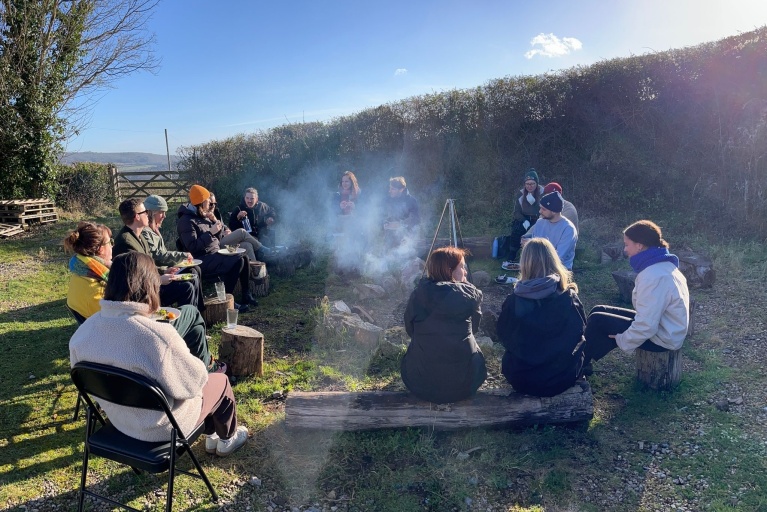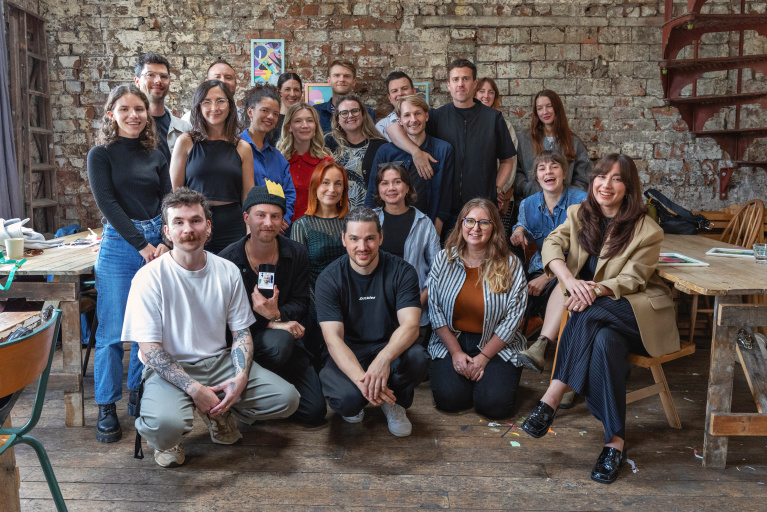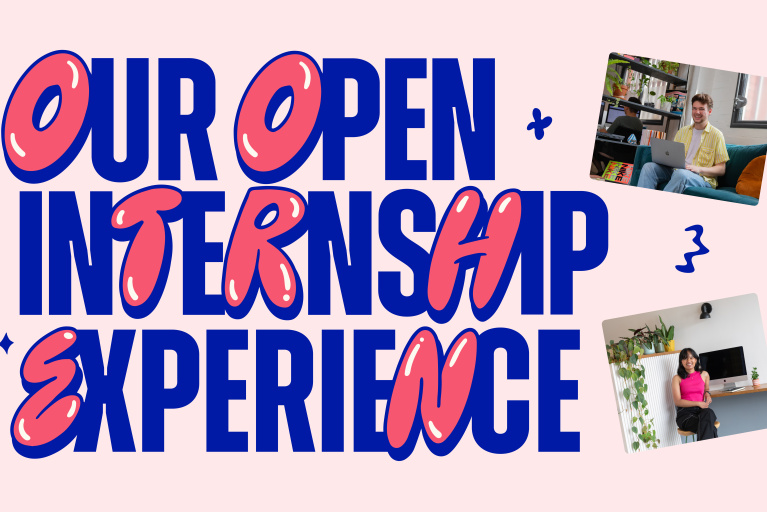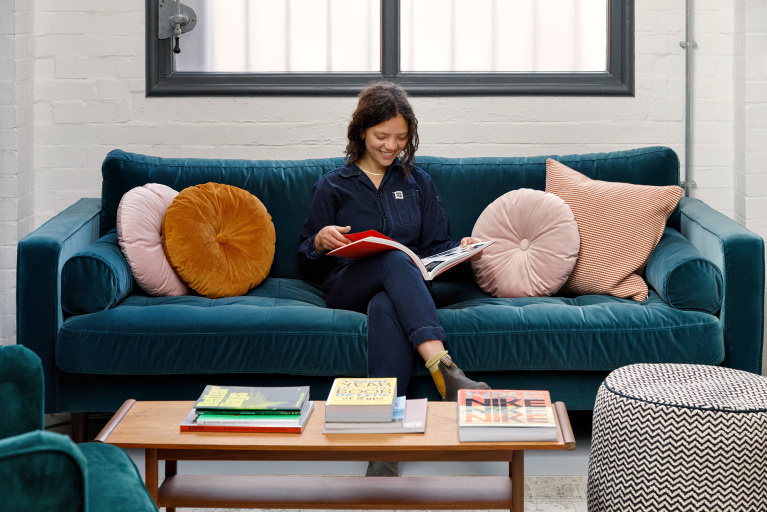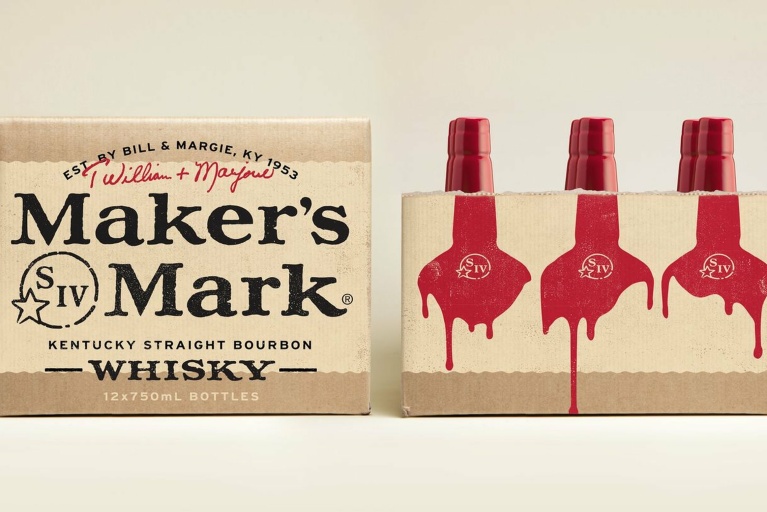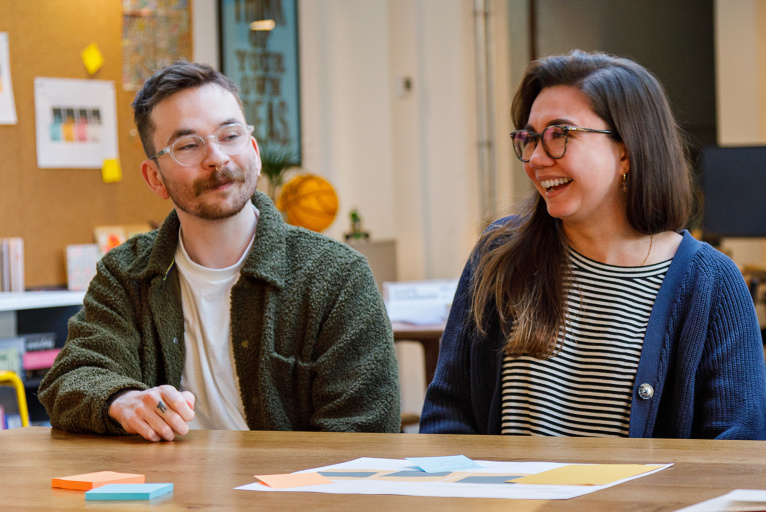Together is Better: Designer and Developer Collaboration

We’re firm believers that ‘together is better’. It’s one of our core principles.
At Fiasco, we have both designers and developers working in our digital team. Having both areas of expertise in-house allows us to create better work. Here, we outline some of the ways we are able to enhance collaboration between designer and developer.
Communication
Communication is key to any successful collaboration. Of course, communication is more straightforward if you are all based under one roof. At Fiasco HQ, problems can be addressed in real-time, in real life. When teams are dispersed simple misunderstandings can happen across different roles, time zones and even cultures.
Communication is more straightforward if you are all based under one roof. At Fiasco HQ, problems can be addressed in real-time, in real life.
For the most part our team works from our studio in Bristol. But during the restrictions brought about by the pandemic, we were all working remotely. Slack has been helpful for keeping an open channel of communication regardless of where we’re working from. Senior Digital Creative Tom, says:
“It might not seem like much, but I think the best thing for that dev-design relationship has been our Slack channel. It’s great for starting conversations. In the same channel you find designers sharing the sites they find inspiring which gets devs curious about how it’s put together.
Maybe they’ll comment against it – “really cool…and not that difficult to do!“. Or “maybe we could use it on …” Then vice versa as well. Devs share new technologies and things they want to try, which gets designers thinking about where they can make use of new code and ideas when they come to designing sites.”

Language Barriers
We’re not talking about native languages here. This is about communicating via the same methods. Describing design intentions and website functionality can be hard. It’s easy to talk at cross-purposes. Therefore it is beneficial for everyone in the digital team to have some understanding of one another’s language.
This doesn’t mean that designers need to learn code, or developers need to be able to design, but a shared understanding and mutual respect for each other’s expertise goes a long way.
Beyond that, learning the best ways to communicate with each other will make the design and development process more effective. For example, drawing a simple diagram may help get your point across faster than a page of written notes. A quick 5 minute chat can solve a challenge faster than endless emails. These methods may not work for everything, but it’s important to find lines of communication that do work – even if these change on a project by project basis.
The other thing to consider is individual preference. Some of us enjoy working side by side to solve a particular challenge. Whilst others prefer to keep their headphones on and their head down to keep their flow. Everyone has their own way.
Whether your development team is based on-site like ours or off-site, giving everyone full transparency from the outset ensures a smoother project for all involved.
On-site vs Off-site
Having open channels of communication throughout the entirety of a project gives everyone full visibility of the task at hand. This allows for a smoother workflow and ensures we are all on the same page.
Often when developers are based off-site they are handed everything right at the end of the design process and tasked with getting the code in order. The problem with this is that they are not given the opportunity to flag issues as and when they arise. Designs could be signed off by stakeholders and ready to go before a developer has a chance to flag that something isn’t feasible.

Of course, even if something is possible it doesn’t always mean it can be achieved within the timeframe and budget available. An estimate of development time can easily be overlooked and cause problems for project managers if replanning is necessary. Whether your development team is based on-site like ours or off-site, giving everyone full transparency from the outset ensures a smoother project for all involved.
Tom adds: “We are striving for more developer reviews earlier on in the process. This is so that developers can inform the designs by steering away from things that will break the budget or stretch the deadline. This can also help to inspire alternative directions, because the technology fits. For example, a developer could look at a design and have a great idea for something new that could work well. The design benefits.”
"We are striving for more developer reviews earlier on in the process. This is so that developers can inform the designs by steering away from things that will break the budget or stretch the deadline."
Tom, Senior Digital CreativeDiversity in Perspective
Developers and designers tend to have different backgrounds. Far from being a friction point, we see this as a real advantage. The best work isn’t created in a vacuum by a single individual. We say ‘together is better’ because we mean it. The more diverse our thinking, the more variety of ideas we can generate as a team.
Each person in the digital team brings their own unique skill set to the table and adds their own perspective to each project. Having time outside of the studio to pursue personal endeavors is important to this. Working closely together as a digital team has allowed us to have a real insight into each other’s strengths and weaknesses.

Back and Forth
The process of creating a website often goes through the design process first before it is passed over to developers to build. We know that’s the way a lot of agencies work. But at Fiasco we have the opportunity to be more symbiotic with our process. Having both designers and developers in-house allows us to collaborate throughout the entire process. From the outset of a project the designers will drip-feed ideas to the development team so that they familiarise themselves early on and have the opportunity to input too.
"We'll be batting ideas back and forth until we land on a creative compromise for both parties without jeopardy to brand, originality or concept."
Sam, Middleweight DesignerFor us it feels natural to work like this. We all enjoy working in a collaborative way, exchanging ideas freely. Even if we stage a formal handover, we can expect there to be some batting back and forth. It’s more fun this way. Designer Samuel agrees:
“I think as a result of having the two in-house teams working side-by-side, the whole process between design and development feels more like a game of Pong. Very often we’ll be batting ideas back and forth until we land on a creative compromise for both parties without jeopardy to brand, originality or concept.”
At Fiasco we believe in the strength of our collective. We have the opportunity to be fluid with our processes, thanks to having both design and development teams under one roof. Our open and inclusive ethos helps us to create better work, together.

We bring together brand and digital to create the extraordinary. If you’d like to speak to us about a future project or collaboration, drop us a line here.

Thanks for reading!
Words By Nathalie
Do you have a project in mind?
Let us know more. We’d love to have a chat to see how we could help.

